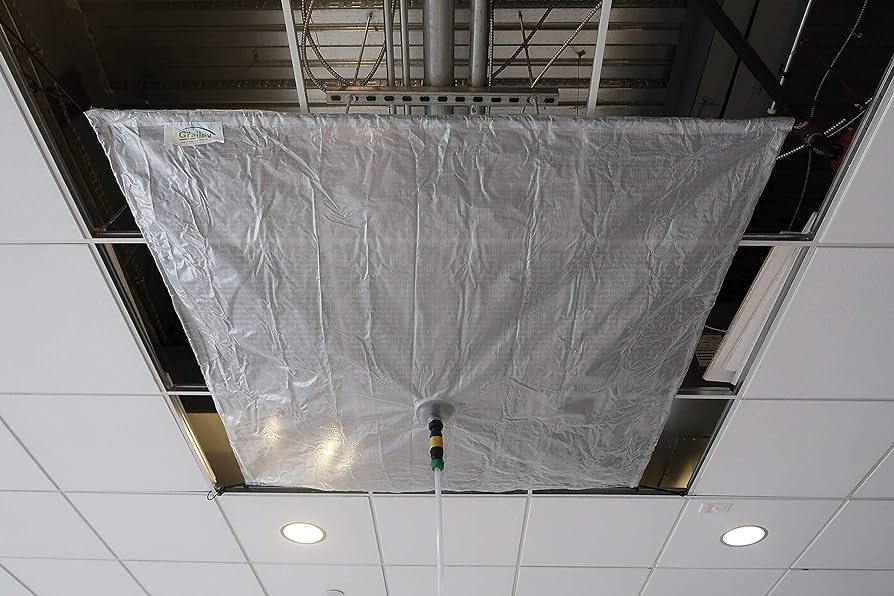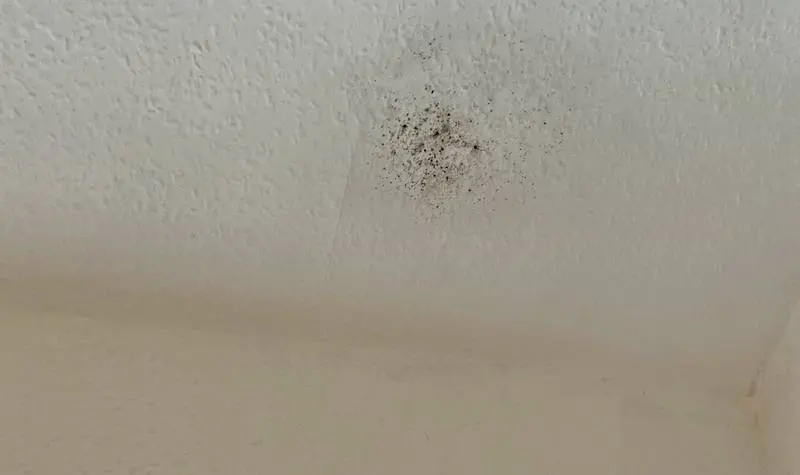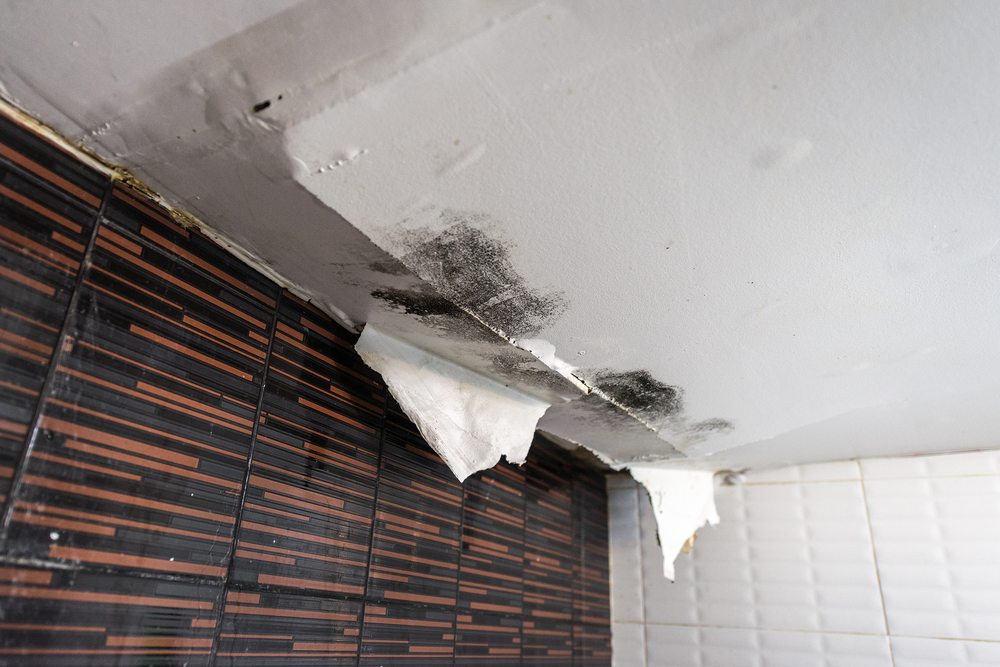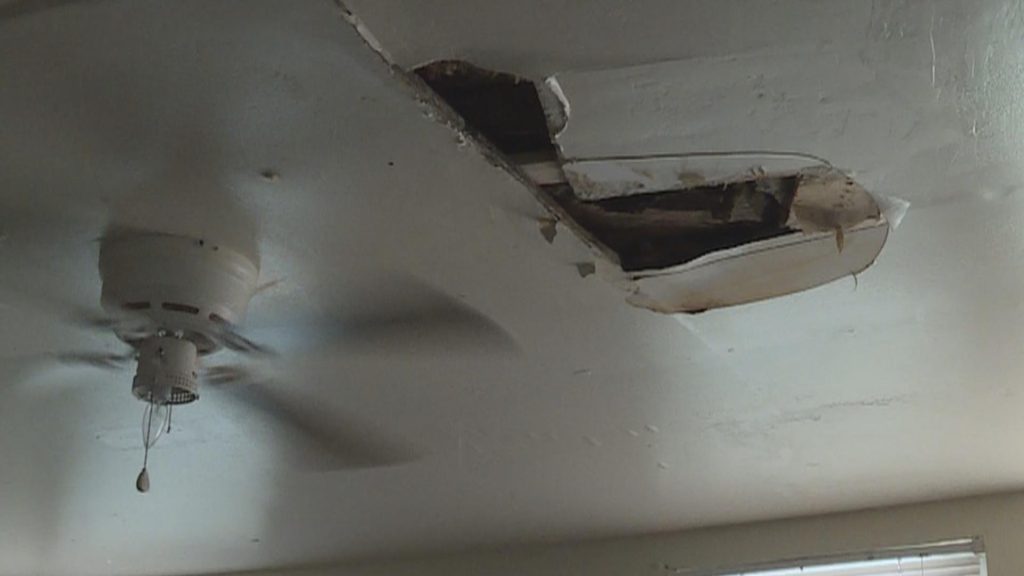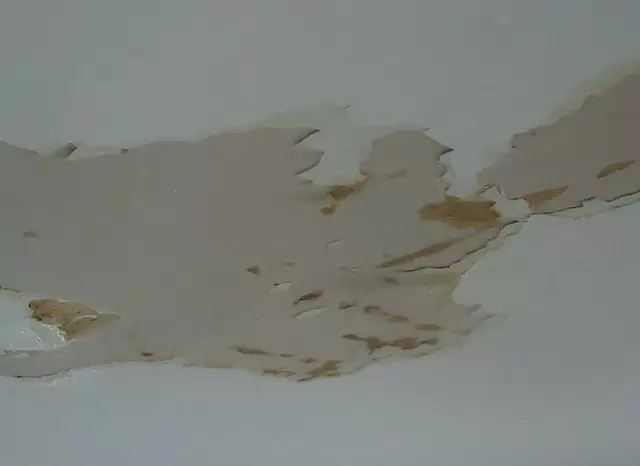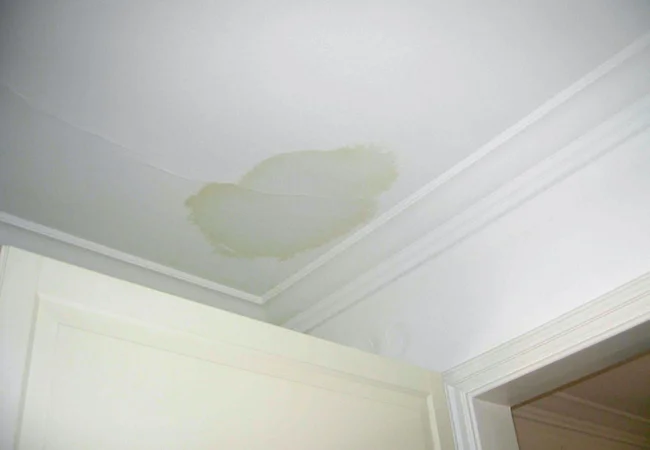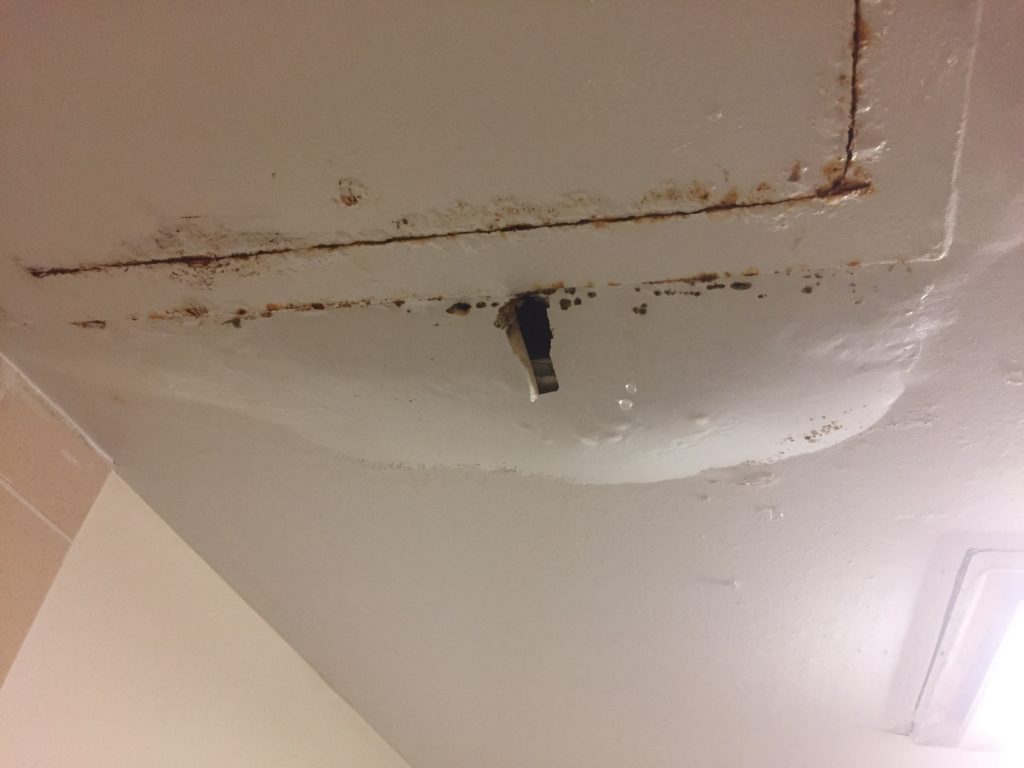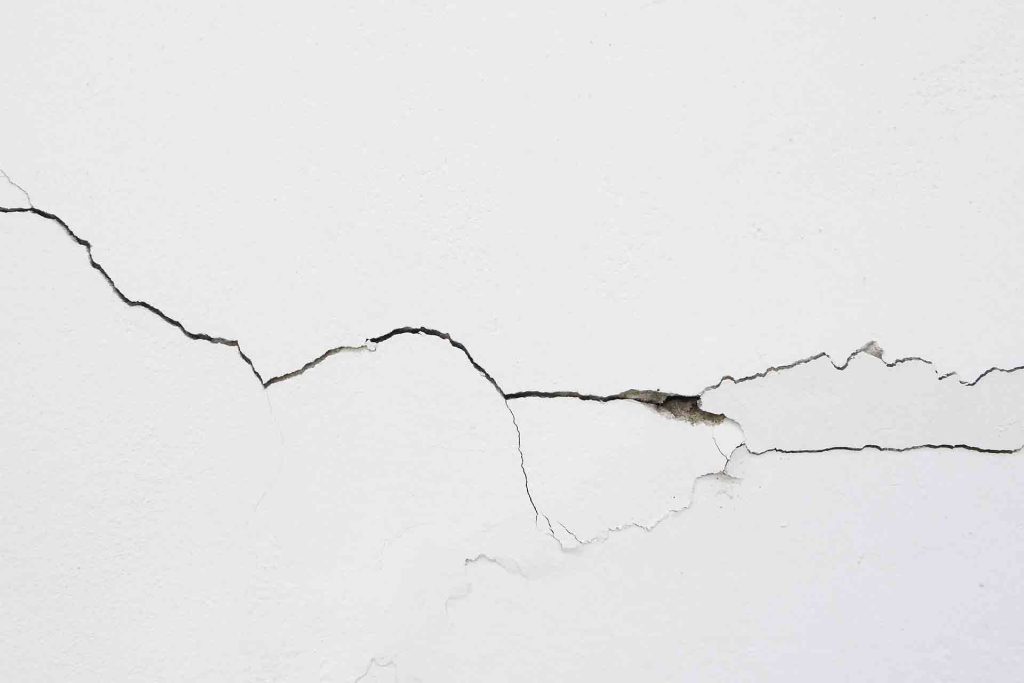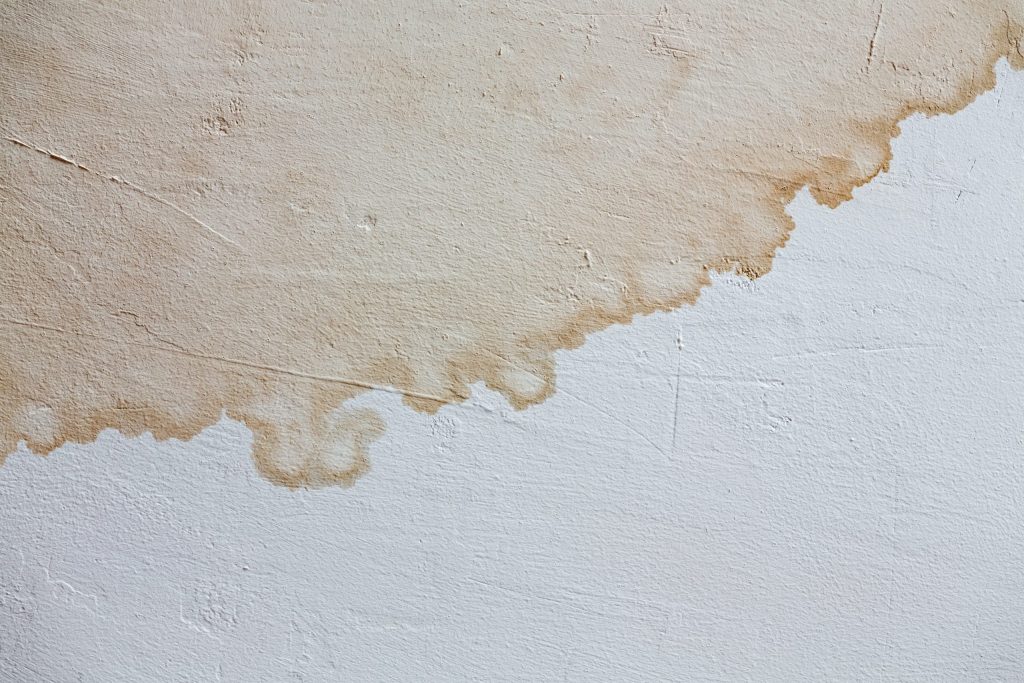A flooded bathroom coming through the ceiling is a homeowner’s worst nightmare. Water leaking through the ceiling can lead to extensive damage, mold growth, and costly repairs. If you’ve experienced this unfortunate situation, it’s essential to act quickly and effectively to minimize the damage and find the root cause of the flooding. In this article, we’ll explore the common causes of a flooded bathroom leaking through the ceiling, how to address the immediate problem, and steps to prevent it from happening again.

Immediate Steps to Take When Water Comes Through the Ceiling
If you notice water seeping through your ceiling from the bathroom above, there are several immediate actions you should take to reduce damage and ensure safety.
1. Turn Off the Water Source
The first thing you need to do when facing a flooded bathroom coming through the ceiling is to turn off the water supply. Depending on the severity of the leak, you may need to shut off the water to the entire house, or simply turn off the supply to the affected fixture (sink, toilet, or shower). This will prevent further water from entering the space and worsening the flood.
Read too: Shiplap Ceiling in Kitchen: A Timeless Trend for a Stylish and Cozy Space
2. Move Furniture and Belongings
Quickly move any furniture, electronics, or valuable items from the area under the leaking ceiling. Water damage can destroy these items, and exposure to moisture can also lead to mold growth. Moving these belongings away will help save them from permanent damage.
3. Contain the Water
Use buckets, towels, and tarps to collect and absorb water that’s already leaking through the ceiling. This can help prevent the water from spreading and causing more widespread damage to your floors or lower-level rooms.
4. Turn Off the Electricity
If there is any chance that the water could reach electrical outlets, light fixtures, or wiring, it’s crucial to turn off the electricity to the affected area. Water and electricity don’t mix, and you don’t want to risk the possibility of electric shock or a short circuit.
5. Call a Plumber or Water Damage Professional
After you’ve contained the water and ensured the safety of your home, it’s time to call in professionals. A plumber can assess the cause of the flooding, and a water damage expert can help with the drying and repair process. Both services are essential to preventing long-term structural damage and mold growth.
Common Causes of a Flooded Bathroom Coming Through the Ceiling
There are several reasons why a flooded bathroom coming through the ceiling might occur. Identifying the root cause is critical for making the necessary repairs and preventing future incidents. Below are some of the most common causes of bathroom flooding that leads to ceiling damage.
1. Burst or Leaking Pipes
Leaky or burst pipes are among the most frequent causes of water damage in bathrooms. Pipes can crack, corrode, or freeze during cold weather, leading to water leaking out and potentially soaking through walls and ceilings. If you experience water seeping from the ceiling directly below the bathroom, a leaking pipe might be the culprit.
How to Address It:
- A plumber can assess the condition of your bathroom pipes and determine whether they need to be repaired or replaced.
- It’s important to inspect pipes regularly and repair any visible leaks to avoid a full-blown burst pipe.
2. Overflowing Toilets or Sinks
Overflowing fixtures, such as toilets or sinks, can cause water to spill over and seep through bathroom floors, eventually reaching the ceiling of the room below. This is often due to a clogged drain or malfunctioning fixture. In many cases, people fail to notice the overflow until it’s too late.
How to Address It:
- Shut off the water supply immediately and unclog the drain if possible.
- Make sure to use appropriate plungers or drain snakes to clear blockages, and never flush large items that could clog the toilet.
3. Faulty Shower Seals or Bathtub Leaks
Showers and bathtubs that aren’t properly sealed can allow water to leak out over time. The caulking around the base of the shower or tub may deteriorate, leading to gradual water leaks that soak through the floor and damage the ceiling below.
How to Address It:
- Reseal the area around the shower or tub by applying waterproof caulking.
- Inspect the seals regularly and replace them as soon as they show signs of wear and tear.
4. Clogged Drains
Clogged drains in showers, sinks, or bathtubs can lead to slow drainage, causing water to pool on the bathroom floor. This excess water can eventually make its way through floor tiles and into the ceiling below.
How to Address It:
- Regularly clean drains to remove hair, soap scum, and other debris.
- If a drain is completely clogged, use a drain cleaner or contact a plumber to clear the blockage.
5. Improperly Installed Plumbing Fixtures
Sometimes, the issue may stem from improper installation of plumbing fixtures, such as sinks, bathtubs, or toilets. If connections aren’t sealed correctly, leaks can develop over time and cause water to seep through the ceiling.
How to Address It:
- Have a licensed plumber inspect the plumbing installations to ensure they are secure and properly sealed.
- Fix any installation issues before they escalate into significant water damage.
How to Prevent Future Flooded Bathroom Issues
Once you’ve dealt with the immediate problem of a flooded bathroom coming through the ceiling, it’s essential to take proactive steps to prevent future issues. Regular maintenance and quick repairs are key to avoiding another ceiling leak disaster.
1. Regular Plumbing Inspections
Have your plumbing system inspected regularly, especially if you live in an older home. Catching small issues like corrosion or minor leaks early can prevent larger, more costly problems down the line.
2. Install Water Alarms
Consider installing water sensors or alarms in your bathroom, particularly near the bathtub, sink, and toilet. These devices can alert you to leaks or flooding early, giving you time to react before water causes significant damage.
3. Check Caulking and Seals
Inspect the caulking around your bathtub, shower, and sink frequently. Over time, caulking can deteriorate, leading to leaks. Reapply caulking as needed to maintain a tight seal.
4. Ensure Proper Ventilation
Bathrooms are high-moisture areas, so proper ventilation is essential. Ensure that your bathroom has a functional exhaust fan to prevent condensation buildup. Excessive moisture can weaken the floor and ceiling materials over time, leading to leaks.
5. Use Drain Screens
Prevent debris from clogging your drains by using drain screens or stoppers. Hair, soap scum, and other particles can easily clog drains, leading to overflows and leaks.
When to Call a Professional
In most cases, addressing a flooded bathroom coming through the ceiling will require professional assistance. If you’re dealing with extensive water damage or unsure of the cause of the flooding, it’s best to call a plumber or water damage restoration expert. They can provide a thorough inspection, make necessary repairs, and ensure that your home is safe from future leaks.
Water damage that is not addressed promptly can lead to more serious problems, including:
- Structural damage to floors, walls, and ceilings
- Mold and mildew growth, which can pose health risks
- Electrical hazards if water reaches wiring or outlets
For these reasons, always err on the side of caution and consult with professionals if you’re unsure about the severity of the damage.
Conclusion
A flooded bathroom coming through the ceiling is a stressful and potentially costly situation for any homeowner. However, with prompt action, careful attention to the root cause, and preventive maintenance, you can minimize the damage and reduce the chances of future flooding.
By addressing plumbing issues early, regularly inspecting your bathroom fixtures, and being vigilant about water leaks, you can keep your home safe and avoid the headaches associated with water damage. Whether it’s a small leak or a major flood, knowing what to do can make all the difference in protecting your home from further damage.
